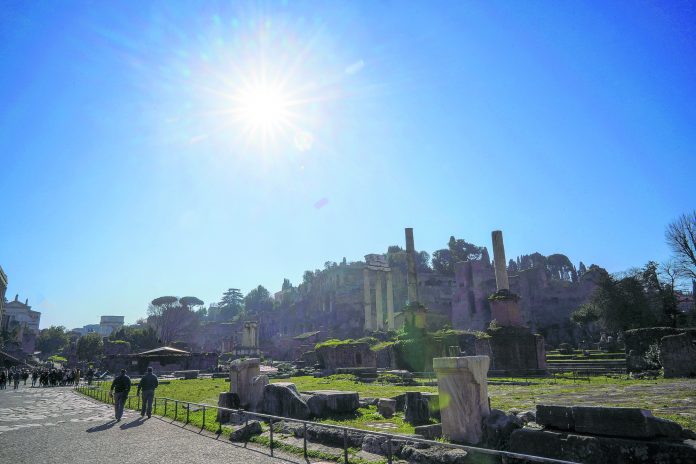
Roman Forum find could be shrine to Rome’s founder, RomulusItalian archaeologists unveiled to the press Friday an exciting new find from the Roman Forum, which they say could be the lost shrine dedicated some 2,600 years ago to Romulus, Rome’s legendary founder and first king.
Visually, the discovery first announced Tuesday is not very remarkable: Peering down in an excavated space beneath the Curia Julia, or ancient senate house, one sees something resembling a washtub that archaeologists say is a sarcophagus, or stone coffin. There’s also a cylindrical stone block, a chunky stub of what might have been an altar.
Both items are made of tuff, carved from the Capitoline Hill that overlooks the Forum, and which is home to today’s City Hall.
The recently excavated area “represents a place, which in history and in the Roman imagination, speaks about the cult ofRomulus,”said archaeologist Patrizia Fortini.
Fortini says no one’s hypothesizing the sarcophagus actually ever contained the bones of Romulus who, with his twin Remus, established the city near the Tiber River around 753 B.C. and founded the kingdom of Rome. It likely dates to the 6th Century BC, some 200 years after Romulus’ time.
“We don’t know whether Romulus physically existed” the way he was described in legends, Fortini said.
But some ancient sources claimed that Romulus was buried in the area of the find, and the sarcophagus could have served as a memorial.
Alfonsina Russo, the archaeologist in charge of the site, noted that according to some ancient traditions Romulus was killed and chopped to pieces, or ascended into heaven.
“Therefore,this cannot be his tomb, but it is very likely, we believe, that this is a memorial site, a cenotaph,” Russo added.
While excavations continue, authorities hope the public will be able to stroll underground to view the find in about two years.
Legends hold that Romulus and Remus were suckled by a she-wolf as babies, but later Romulus killed his twin brother in a dispute.
Curiously, it’s the second time the sarcophagus and cylindrical stone stub have been unearthed, but it’s only now that archaeologists are attributing an exciting significance to them.
In 1899, an Italian archaeologist, Giacomo Boni, was the first to systematically excavate the area. He described in his writings finding “a rectangular, tub-shaped crate in tuff” and the cylindrical stone, which he likened to a tree trunk. The open-topped “crate” contained what apparently were odds and ends — fragments of pottery, pebbles, sea shells and a piece of reddish plaster.
Boni attributed no particular importance to his finds, and in the 1930s, during the regime of dictator Mussolini, a monumental staircase to the Curia building was built over the site.
“We thought it would have been destroyed” by the 1930s construction above ground, Russo said. But Fortini’s intuition told her that what Boni had found was likely a shrine to Romulus, since the area is one associated with the origins of Rome, and she sought to excavate there.
A crucial clue for Fortini to decide where to dig was the location a few meters (yards) away of a black marble pavement known by its Latin name, Lapis Niger. Fortini noted in an interview that the Lapis Niger, one of the oldest relics in the Forum, was long believed to mark a sacred spot and was linked to the origins of Rome.



















